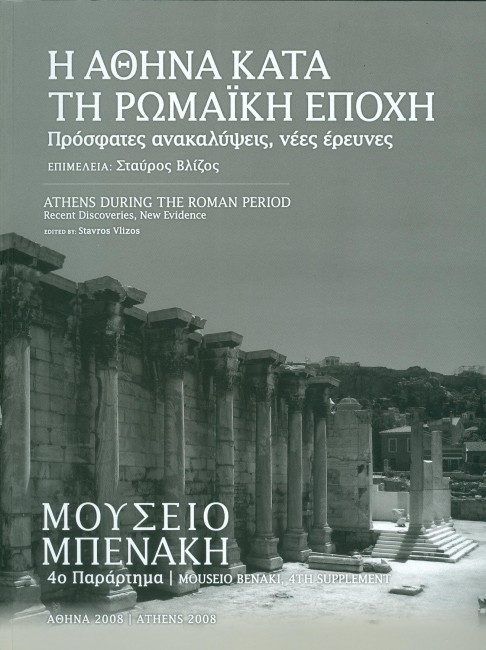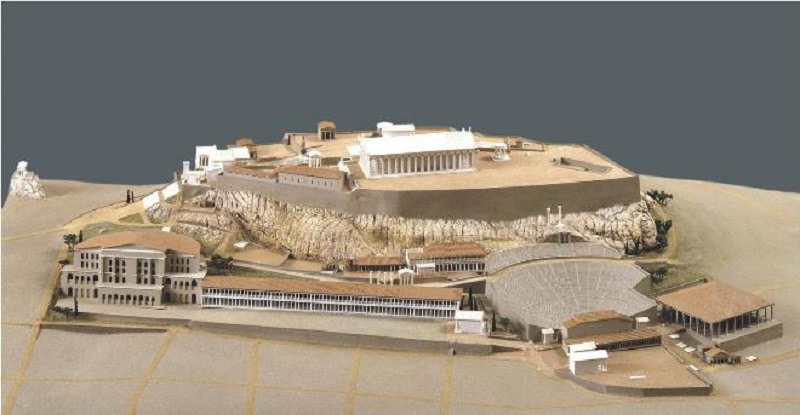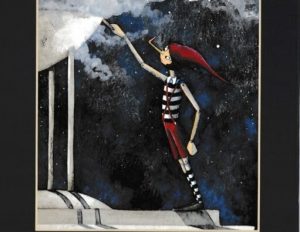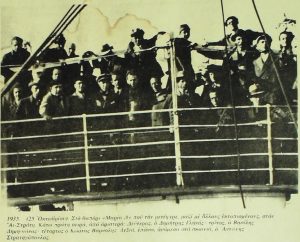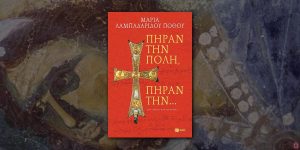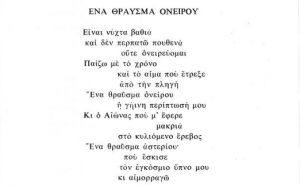Ανατολικές Θεότητες στη Νότια Κλιτύ της Ακρόπολης
Συγγραφέας: Στυψιανού-Τριάντη Ισμήνη-Αλίκη
Έκδοση: Μέρος του συλλογικού έργου Η Αθήνα κατά τη Ρωμαϊκή εποχή, Μουσείο Μπενάκη 4ο παράρτημα, Αθήνα 2008
Πρόσφατες ανακαλύψεις, νέες έρευνες
Επιμέλεια έκδοσης: Βλίζος Σταύρος
Γλώσσα: Ελληνική, Αγγλική
Μετάφραση: Θεοχάρη Χριστίνα
Αριθμός σελίδων: 20 (Σελίδες 391-410)
ISBN: 9789604760022
ISSN: 1109-4109
Περιγραφή:
Eastern Deities from the Makrygianni lot
At the excavation of the Makrygianni lot, on the eastern side of the Acropolis, where the new Acropolis Museum has been built, three figurines were found in 1998: a small torso of Artemis Ephesia, a figurine of Zeus Heliopolitanus and another one representing an Egyptian deity Isis or Osiris. All three of them are quite rare in Greece, but one is unique. The small torso of Artemis Ephesia (pl. 1-2) made of white, small-grained marble, is barely 9,3 cm in height and is preserved until slightly under the waist. It bares a great resemblance to the upper torso found at the Ephesos Museum, which is also made of small-grained marble and 9,6 cm in height. The fact that it also has the same dimensions, leads us to the assumption that these are copies from the same workshop and that probably the figurine of the excavation at the Makrygianni lot has been imported. Judging from the detailed work, along with the smooth and polished material which looks like ivory, one could generally say that it is a work of art from the second half of the 2nd century A.D. The small size of the figurine and the place it was found dictate that it was an object of private worship from the owner of a house at the area, which had some connection with Ephesus and the worship of that particular goddesss. Τhe second statue of an eastern deity represents Zeus Heliopolitanus (pl. 4–7). The statue, of small–grained marble, is broken at the lower part; it is 70 cm. in height. An unbearded young man is represented in frontal position. His head, slightly turning right, is worked separately and attached to the torso. He wears a chiton and over it a pectoral garment, decorated with relief busts and motifs. At the front, in the middle of the chest, the bust of Kronos and under the belt, where the pectoral is divided in eight sections, busts of deities and a pair of animals; on the back side, at the upper part an eagle and in the sections rosettes and stars. The statue from the Makrygianni excavation, can be dated at the end of the 1st century A.D., based on the features of its face. In Greece, it is the first statue of this particular type ever to be found. The only other testimony is a small altar with a Latin inscription referring to the triad of the god of Heliopolis found in 1888, at the Roman agora, near the Gate of Athena Archigetis. Τhe statue of the Egyptian deity (pl. 9–15) is made of greyish small–grained marble; it is 60 cm. height. The deity is strictly frontal and has no plinth, but steps on a base in the shape of a crocodile. It wears a garment close to the body, with long sleeves. The lower part of the limbs (pl. 12) worked to be inserted belongs to the statue. It is interesting that the statue has been represented with many symbols of different deities. At the lower part of the body a snake is wrapped around it, forming two coils. The hands bent at the elbows bear each one an ear of corn. An aegis decorates the chest. The head is represented on a sun disk. The hair falling down in wavy curls is retained by a tress having on the top en emblem and two bouquets of flowers, on the sides ivy leaves and bunches of grapes. The statuette can be dated in the end of the 2nd century A. D. as one can assume by the deep moulding of the base, the running drill separating the fingers of the left hand, as well as the rendering of the eyes with the slightly incised pupil and the way the grapes are separated by small marble stems. It is probably a cult–statue for a temple in the area. A temple of Isis is suggested to be found at the Acropolis South Slope, not far from the area of the Makrygianni lot. Two inscriptions support the argument for the existence of the temple. The one is found west of the Asklepieion. It is a large base of Hymetian marble (pl. 16) with the names of gods incised in three columns, divided with deeply carved bands. On the first stele Hermes, Aphrodite and Pan are mentioned, on the second the Nymphs and on the third, Isis.. The inscription is dated at the 3rd quarter of the 1st century A.D. The second inscription, found at the church of Panagia Speliotissa above the Dionysus Theatre, was taken by Elgin and is now at the British Museum. It mentions the construction of a temple, circa 120 A.D. This small temple has been identified by I. Beschi with the temple of .φροδίτη .φ’ .πολλύτ. mentioned by Euripides in the homonymous tragedy. Later on, the cult of Isis was also housed there, as S. Walker argues. From the above, one may come to the conclusion that during Roman times, in Athens and particularly on the south slope of the Acropolis, the cult of the Egyptian deities was prominent and that the eastern deities were far from unknown.
